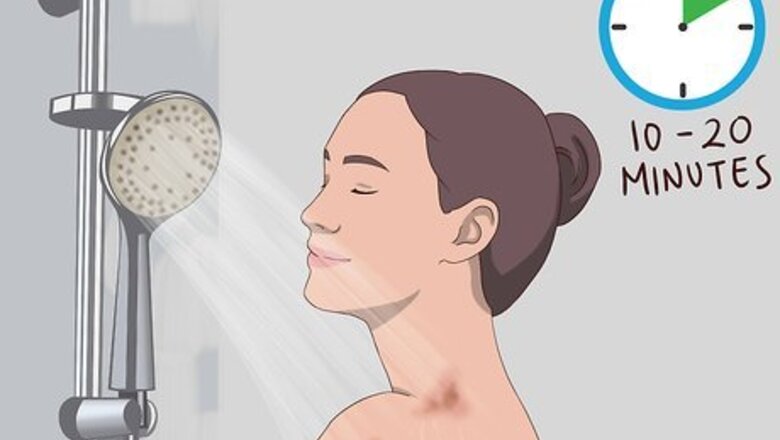
views
Soothing Your Skin
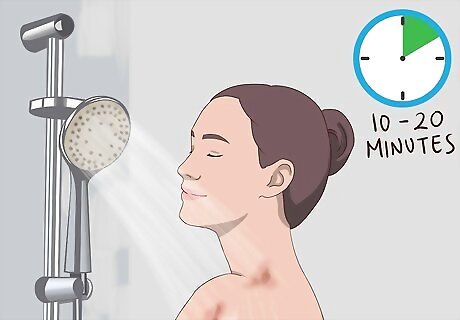
Stand under cool water in the shower for 10 to 20 minutes. If you've just gotten out of the tanning bed, it may take a few minutes or hours to realize you've spent too long in there. As soon as you feel your skin throbbing or notice any redness, hop in the shower and let cool water run over your body for 10 to 20 minutes. Use low water pressure because too much can be painful on burned skin. Don't use ice-cold water—a little below room temperature is ideal. Water that's too cold can shock your skin. Take a cool shower every few hours for pain relief. If you don't have access to a shower or if you're short on time, wet a washcloth with cool water and lay it over the most burned areas.
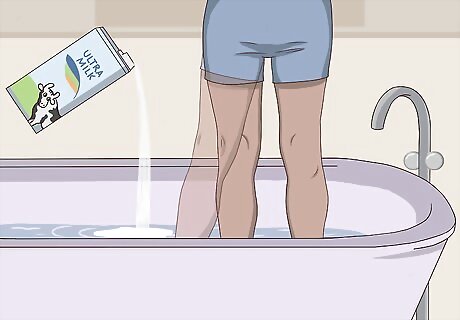
Pour full-fat or whole milk into cool bath water to ease swelling. Run a cool bath (room temperature to cold) and add 2 cups (470 mL) of full-fat or whole milk. Stir the water and milk around with your hand or foot until it looks cloudy. Hop in and relax for 20 to 30 minutes. As a plus, your skin will feel silky smooth! The vitamin A and D in milk can help soothe the swelling and redness. As an alternative, use goat's milk or buttermilk for an extra-creamy soak.
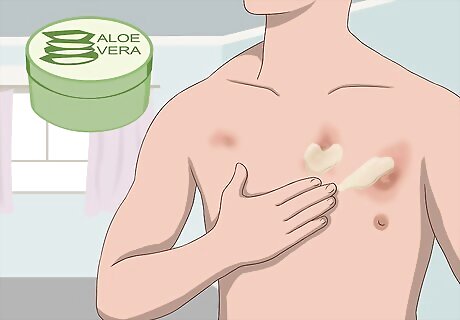
Apply aloe vera gel all over your body or to the affected areas. Use at least a quarter-sized amount of aloe vera gel on each part of your body that's burned. Be gentle when you rub it in because too much pressure can irritate your skin. It'll leave your skin feeling cool and tingly. You can buy aloe vera gel at any drugstore or extract it from the aloe barbadensis plant if you have one. Aloe vera gel works on burns because it has anti-inflammatory properties, promotes blood circulation to the area, and prevents bacteria. Avoid aloe vera products or lotions that have "caine" in the name or on the label (like benzocaine or lidocaine). These numbing agents can irritate your skin and may cause allergic reactions.
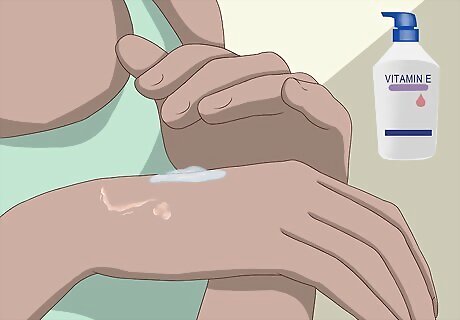
Apply a lotion containing vitamin E or vitamin E oil to treat peeling skin. If your skin is peeling, don't be frugal with vitamin E lotion or oil. Slather it on after getting out of the shower or bathtub and patting your skin dry. You can buy vitamin E oil at any drugstore or beauty supply store. Look for lotions at the drugstore that advertise vitamin E on the front or have it listed in the top 5 ingredients on the back of the bottle so you know there's a lot of vitamin E in it. Lotions containing vitamin E can decrease redness and swelling caused by the burn.
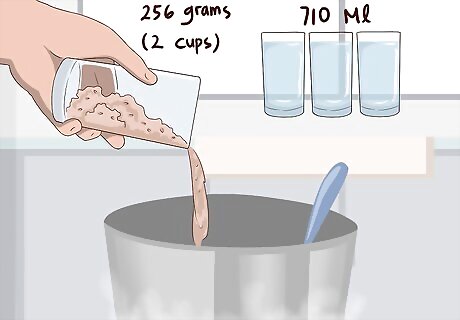
Slather cold oatmeal onto your skin to relieve itching and stinging. Combine 2 cups (256 grams) of dry oats with 3 cups (710 mL) of water and bring it to a boil over medium heat. Stir it every minute or so once it starts steaming. When the oats have absorbed most of the water, remove it from the stove and wait 30 minutes to 1 hour for the mixture to cool completely. Scoop the mixture into your palm and slather it onto your skin. Leave it on for 20 to 30 minutes and then hop in the shower to rinse it off. If you're worried about oats clogging your shower drain, wet a kitchen towel with cool water and gently wipe the oats off your skin. Then hop in the shower. You may want to put a towel down on the floor so you don't make too much of a mess when you're applying it. You can also buy pre-made packets of colloidal oatmeal to pour into your bathwater. Oats contain anti-inflammatory properties that can help heal dry, itchy, or swollen skin faster.
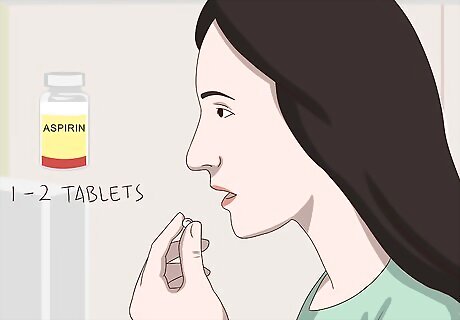
Take an over-the-counter painkiller to relieve swelling and pain. Take 1 to 2 tablets of aspirin or ibuprofen so you can go about your day a little more comfortably. If you're taking prescription medication or other NSAIDs, talk to your doctor before you take any over-the-counter painkiller. Aspirin is only recommended for adults over 18 because it can cause a potentially fatal condition called Reye's syndrome in teens and children. Children and teens ages 6 to 18 can take acetaminophen instead. Don't take ibuprofen if you have ever had a stomach ulcer, liver disease, or heart failure because it can worsen these conditions.
Protecting Your Burned Skin
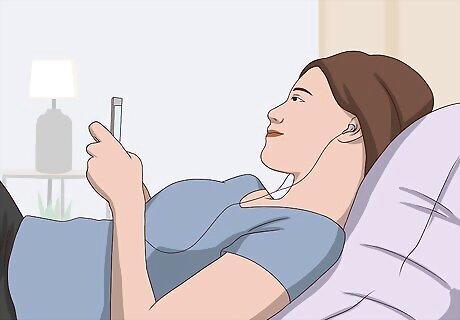
Stay out of the sun as much as possible or wear sunscreen as needed. Stay indoors as much as you can until the burn has healed—the last thing your skin needs is more sunlight! If you can't avoid going out in the sun, be sure to wear SPF 15 or higher. Use a quarter-sized amount of sunscreen on each exposed area (like your arms, neck, chest, and legs) 15 minutes before leaving the house. For the most protection, use a sunscreen that shields your skin from both UVA and UVB rays. It's important to apply it 15 minutes before going out in the sun so the lotion has time to sink into your skin.
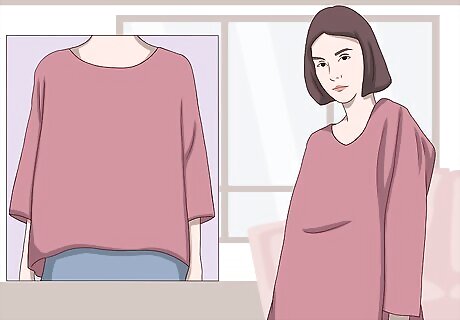
Wear loose, opaque clothing to protect your skin from the sun. Hold your clothing up to a light to see how tightly woven or opaque it is. If you can see the light coming through it, it won't offer you much protection against the sun's UV rays. Avoid wearing wool clothing or anything made from synthetic fabrics like nylon, polyester, spandex, and rayon because these may irritate your skin.
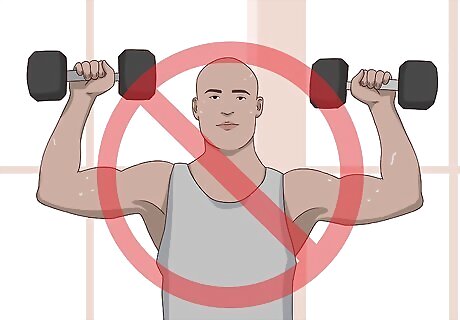
Avoid sweating until your sunburn has healed completely. Skip going for a run or going to the gym until you don't notice any redness, inflammation, or stinging. If you need some exercise endorphins, go for an easy walk in the shade or on the treadmill. The salt in sweat can irritate your skin and clog the pores on and around the burned area, causing blisters and prolonging the healing time. If it hurts to move your limbs at all, take a few days off from your workout routine. Pulling and stretching the skin not only hurts, but it'll prolong the healing process.
Resist the urge to pick at blisters or peeling skin. If you have blisters from your burn, leave them alone. Blisters form natural cushions that help your skin heal, so popping or picking at them can delay the healing process or even put you at risk of an infection. Similarly, it's best not to mess with any skin that's peeling on its own. If you like, you can put a light moisturizer, such as 100% aloe gel, on the blisters. Just avoid using anything too heavy, like petroleum jelly, since this will trap sweat and heat against your skin.
Eating to Heal Your Skin
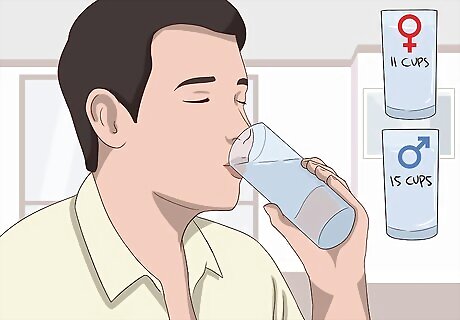
Stay hydrated to help your skin repair itself. Hydration speeds up the healing process, so aim to drink at least 11 cups (2,600 mL) a day if you're a woman and 15 cups (3,500 mL) if you're a man. Limit or avoid caffeinated or alcoholic beverages like coffee, black tea, spirits, wine, and beer because these dehydrate your body. You may be dehydrated if you have a dry mouth or dry skin, or if you feel dizzy and tired. Another way to find your ideal intake is to divide your weight in pounds by 2. That number is how many ounces you should drink. For instance, if you weigh 140 pounds (64 kg), you should drink 70 fluid ounces (2,100 mL) of water per day.
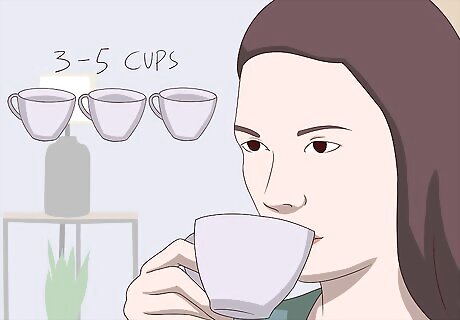
Drink 3 to 5 cups of green tea a day to ease inflammation. Place a bag of green tea in 8 fluid ounces (240 mL) of boiling or near-boiling water and let it steep for 3 to 5 minutes. Remove the bag and sip on the tea 3 to 5 times a day. You can also soak a small washcloth in cooled green tea and apply it to your skin to reduce the stinging sensation of a sunburn. Green tea also contains polyphenols that can help stop the progression of skin cancer. Green tea contains 30 to 50 mg of caffeine per bag. If you're sensitive to caffeine, drink decaf green tea instead.
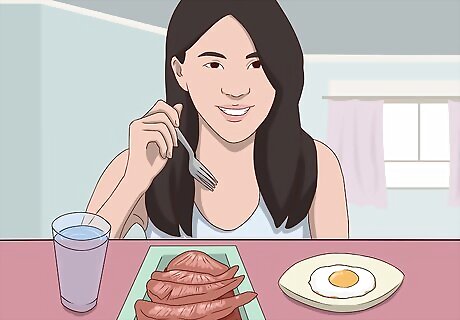
Get 400 to 800 IU (10 to 20 mcg) of vitamin D every day. Make an effort to eat foods rich in vitamin D every day for its anti-inflammatory and skin-repairing properties. Fatty fish (tuna, mackerel, salmon), beef liver, cod liver oil, cheese, egg yolks, mushrooms, and fortified milks and cereals are all great sources of vitamin D. For instance, a 3.5-oz (99 g) serving of salmon contains about 400 IU of vitamin D. If allergies or dietary restrictions prevent you from getting enough vitamin D from food, talk to your doctor about taking a vitamin D supplement.Tip:Eating a high amount of vitamin D 1 hour after over-tanning has been shown to reduce swelling and redness from sunburns. So if you accidentally tan too long in the future, get some vitamin D right away!
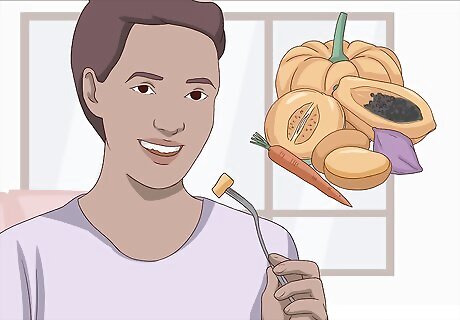
Eat orange foods for a boost of skin-loving beta carotene and vitamin C. Stock up on orange foods at the grocery store and try to eat something orange at every meal. Sweet potatoes, carrots, pumpkin, mango, cantaloupe, and papaya can help speed up the healing time and make your skin more resistant to UV rays. The daily recommended amount of beta carotene is 18,000 IU per day. Just 1 cup (128 g) of chopped raw carrots contains 10,605 IU. Note that eating too much beta carotene can cause your palms to take on a yellow hue, so don't go too crazy with the orange foods!
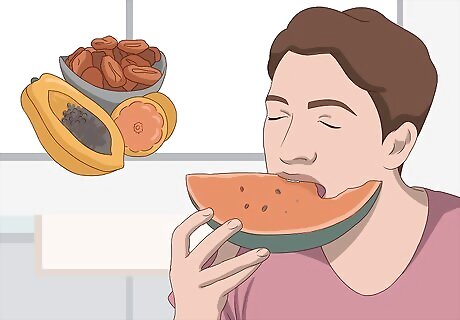
Eat 2 to 3 servings of fruits rich in lycopene to lessen skin damage. Have red and pink fruits like watermelon, grapefruit, papaya, or sun-dried tomatoes often if you tan regularly and are worried about long-term skin damage. Lycopene isn't necessary to eat every day, but aim to get 8 to 21 mg to heal your burn and reduce the risk of long-term skin damage. Lycopene has also been shown to protect against certain types of cancer. It's easy to get a good dose of lycopene. For instance, just half of a grapefruit contains 17 mg of lycopene and a 3.5-oz (100 g) serving of sun-dried tomatoes contains 45.9 mg.
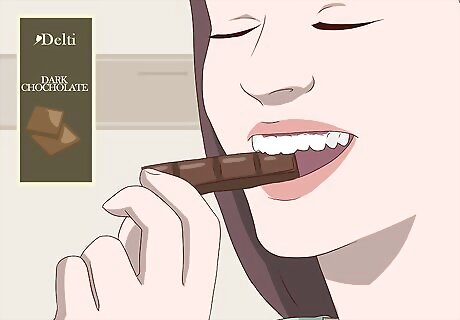
Treat yourself to 1 to 2 oz (28 to 56 g) of dark chocolate every day. Dark chocolate contains flavanols that can protect your skin from UV rays and hydrate your skin. A serving about the size of a match-box is the perfect amount to enjoy as a snack or dessert. Choose a variety with at least 70% cocoa for the most benefits.















Comments
0 comment